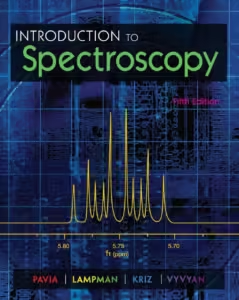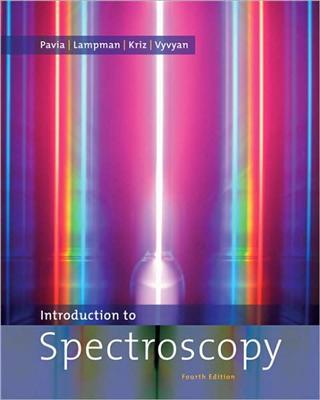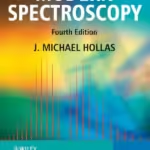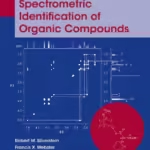 Free download Introduction to Spectroscopy (5th edition) authored by Donald L. Pavia, Gary M. Lampman, George S. Kriz, and James R. Vyvyan in pdf.
Free download Introduction to Spectroscopy (5th edition) authored by Donald L. Pavia, Gary M. Lampman, George S. Kriz, and James R. Vyvyan in pdf.
“Introduction to Spectroscopy” by Pavia et al. has long been a revered cornerstone for students and professionals venturing into the often perplexing realm of molecular spectroscopy. Now, in its 5th edition, this comprehensive work continues to build on its legacy of being the ultimate guide in unraveling the mysteries of how molecules interact with light and electromagnetic radiation. What makes this edition stand out is not only its enduring clarity and precision but also its finely tuned updates to meet the needs of a new generation of readers.
The structure of the book is exemplary in the way it guides readers from basic concepts to complex applications. It kicks off with a lucid introduction to the foundational principles, seamlessly leading into various spectroscopic techniques: nuclear magnetic resonance (NMR), infrared (IR), mass spectrometry (MS), and ultraviolet-visible (UV-Vis) spectroscopy. Each chapter is crafted with a natural progression, giving readers the tools they need before they confront the more challenging material.
What sets this book apart is how it manages to remain deeply technical without becoming overwhelmingly dense. The authors strike a balance between theory and practical application, with an exceptional array of real-world examples, problems, and spectral data that solidify understanding. Whether you are an undergraduate chemistry student or a seasoned professional looking to refresh your knowledge, the book offers something for everyone.
The 5th edition introduces subtle yet significant updates, reflecting the latest advances in instrumentation and techniques. This ensures that readers are not learning outdated methods but are instead equipped with knowledge that is relevant in modern research and industry settings. The treatment of NMR spectroscopy, in particular, shines in this edition. Pavia et al. delve into multi-dimensional NMR with remarkable clarity, breaking down complex interactions into digestible segments without sacrificing scientific rigor.
Moreover, the design and layout of the book are visually appealing, which, while seemingly superficial, makes navigating through complex topics much easier. The use of clear diagrams, spectra, and illustrative figures enhances comprehension, while the thoughtfully placed chapter summaries and problems at the end of each section reinforce critical concepts.
For those who thrive on self-study, this book is a treasure. The problems at the end of each chapter vary in difficulty, from basic conceptual questions to challenging exercises that mimic real laboratory analysis. The answers to selected problems are available, allowing readers to check their work, which is a blessing for independent learners.
However, no book is without its drawbacks. Some readers might find that the introductory sections of certain chapters move at a brisk pace, potentially glossing over foundational details that a novice may struggle with. While the book is strong in providing real spectra, a more expansive set of problem solutions could further enhance its utility as a teaching resource.
In sum, “Introduction to Spectroscopy” (5th edition) is more than a textbook—it’s an intellectual companion that stays with you long after you’ve closed its pages. Whether you’re parsing through a complex NMR spectrum or simply revisiting the fundamentals of mass spectrometry, Pavia and his co-authors ensure you have the right tools at hand. If you’re looking for a definitive guide to spectroscopy that balances precision with accessibility, this is the book to pick.
Contents
- Molecular Formulas and What Can be Learned from Them
- Infrared Spectroscopy
- Mass Spectrometry
- Mass Spectroscopy: Basic Theory, Instrumentation, and Sampling Techniques
- Mass Spectroscopy: Fragmentation and Structural Analysis
- Nuclear Magnetic Resonance Spectroscopy: Basic Concepts
- Nuclear Magnetic Resonance Spectroscopy: Carbon-13 Spectra, Including Heteronuclear Coupling with Other Nuclei
- Nuclear Magnetic Resonance Spectroscopy: Spin-Spin Coupling
- Nuclear Magnetic Resonance Spectroscopy: Other Topics in One-Dimensional NMR
- Nuclear Magnetic Resonance Spectroscopy: Advance NMR Techniques
- Ultraviolet Spectroscopy
- Combined Structure Problems
- Answers to Selected Problems
Free download Introduction to Spectroscopy (5th edition) authored by Donald L. Pavia, Gary M. Lampman, George S. Kriz, and James R. Vyvyan in pdf from following download links.
Please follow these instructions to unlock the download link(s). If the download link(s) do not appear on mobile devices, try accessing this page from a laptop or desktop computer.
Password for Download Links: chemistry.com.pk
File Size: 27.6 MB. Pages: 786. Download Instructions. Kindly read the disclaimer.
You can also buy Introduction to Spectroscopy (5th edition) authored by Donald L. Pavia, Gary M. Lampman, George S. Kriz, and James R. Vyvyan from Amazon by clicking the image below.



